My introduction to Estemmenosuchus came from the 1994 episode of Paleo-World titled “Tail of a Sail”, which was about Dimetrodon and other synapsids, their evolution, and how they relate to mammals. Estemmenosuchus was only featured briefly via images of its skull and a couple pieces of paleoart but that was enough for me to become enamored with this animal and to help broaden my appreciation for prehistoric life beyond the Mesozoic. Now Safari is doing their part to broaden appreciation for prehistoric life in today’s collectors, both young and old, with an Estemmenosuchus as part of their Prehistoric Life range. Not counting their 2018 Dimetrodon this is Safari’s first stem-mammal since their 2010 Inostrancevia.
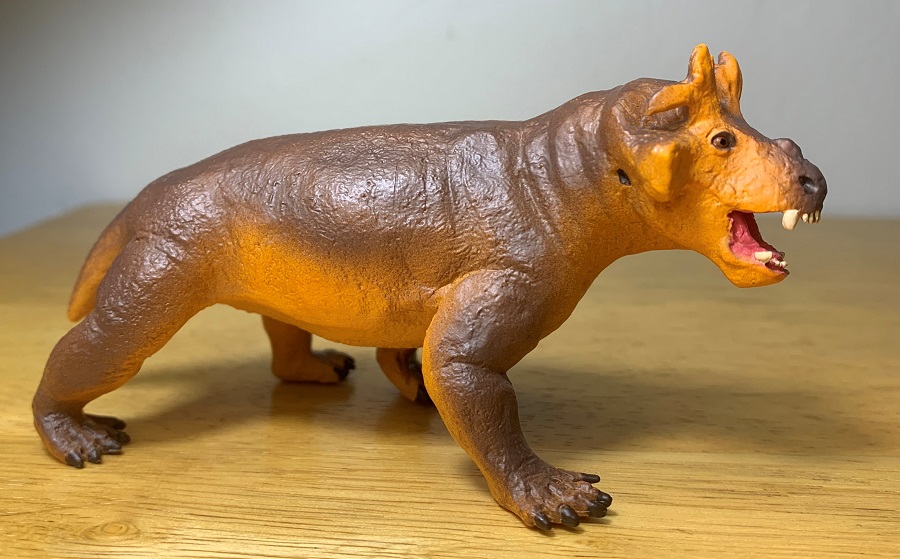
Estemmenosuchus (Greek for crowned crocodile) was a genus of therapsid that lived during the middle Permian Period, 267 million years ago. Being a therapsid means that Estemmenosuchus was a mammal relative. Indeed, mammals are the only surviving lineage of therapsids, or synapsids for that matter. Two species of Estemmenosuchus have been described, E. uralensis and E. mirabilis, both from Russia. This figure from Safari clearly represents E. mirabilis, with its more elaborate cranial ornamentation. Estemmenosuchus lived in coastal marshes and other wetlands that at the time would have been located near the equator. It is thought to have been an herbivore or omnivore.
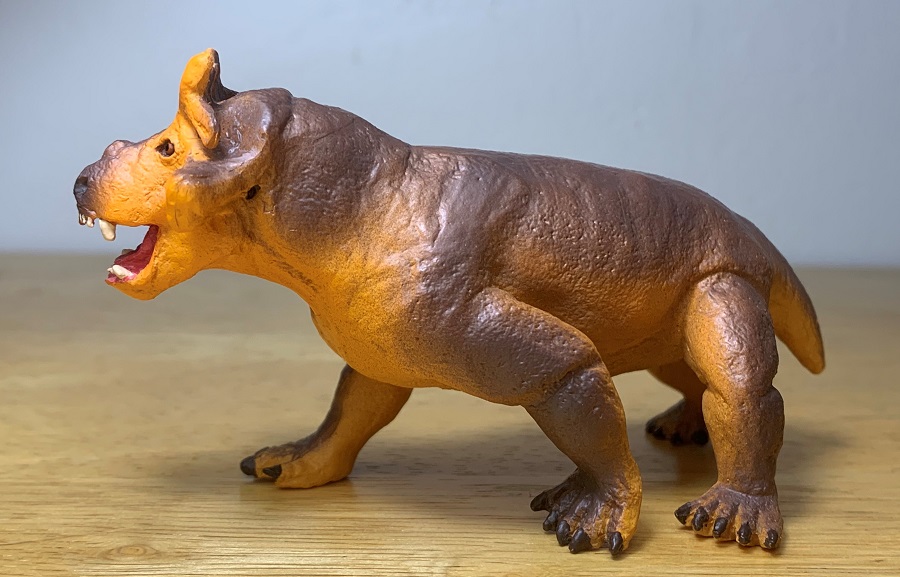
The Safari Estemmenosuchus stands just under 2.5” (6.19 cm) tall to the top of the head and measures 4.75” (12.065 cm) long. E. mirabilis was the smaller of the two species and is estimated to have measured 9.8’ (3 meters). This puts the Safari figure at 1/24 in scale.
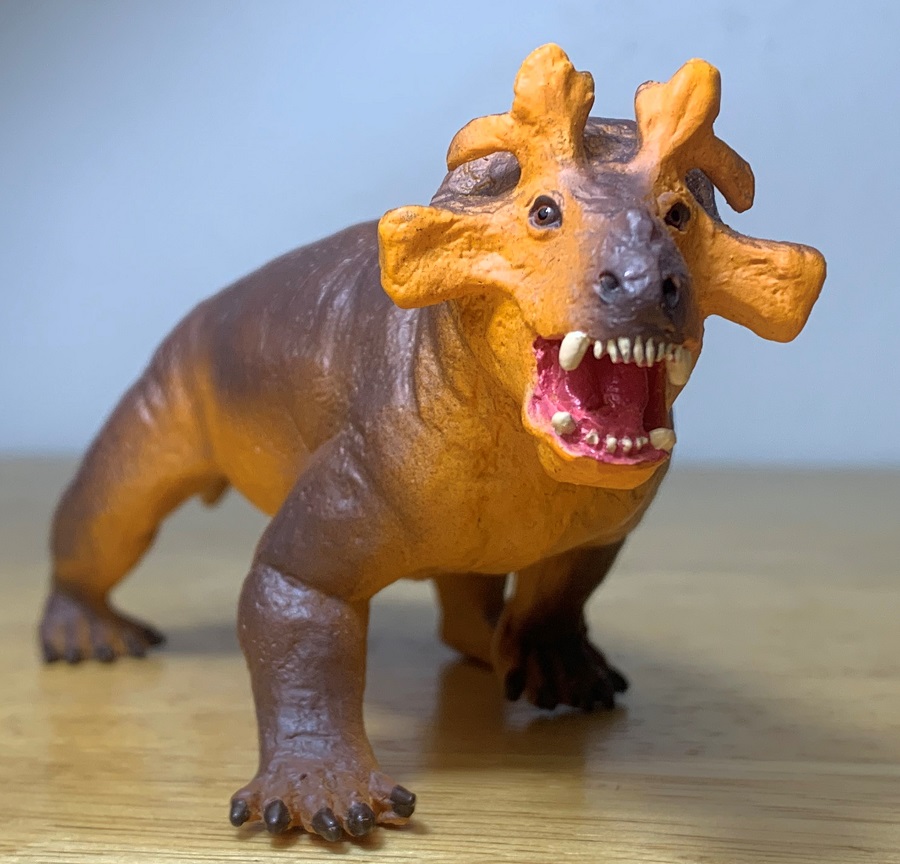
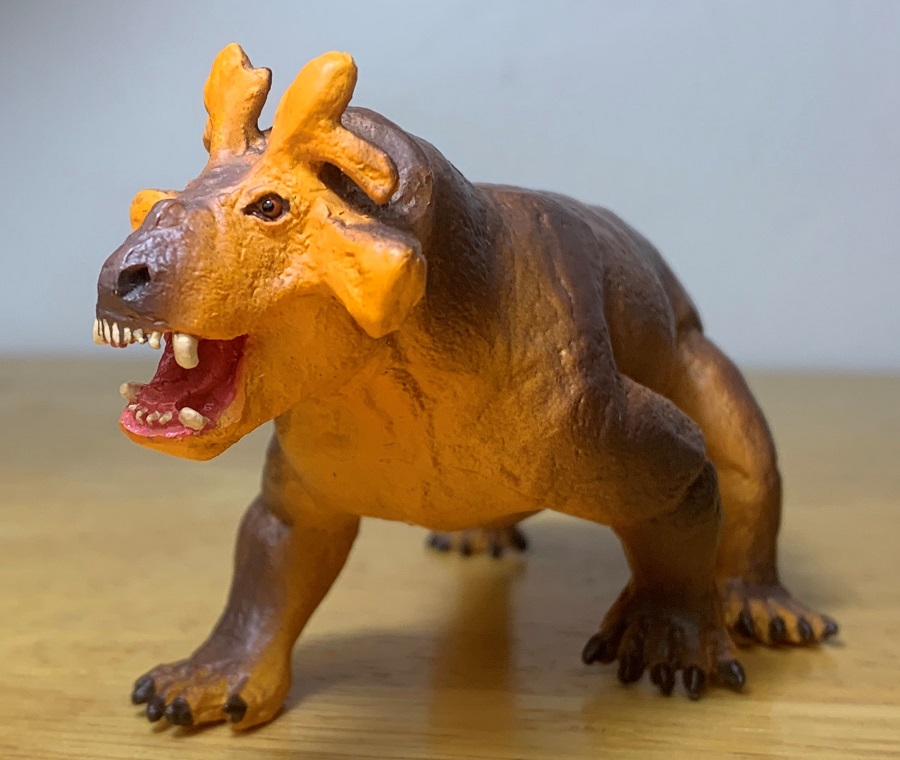
The Safari Estemmenosuchus is depicted striding forward on accurately sprawled limbs, the right forelimb stepping forward and the right hindlimb pushing back. The head is looking slightly rightward. The mouth is open, displaying the varied dentition of the animal, including incisors, large canine teeth, and small, tightly packed molars on the upper jaw. A thick, fleshy tongue obscures the bottom molars.
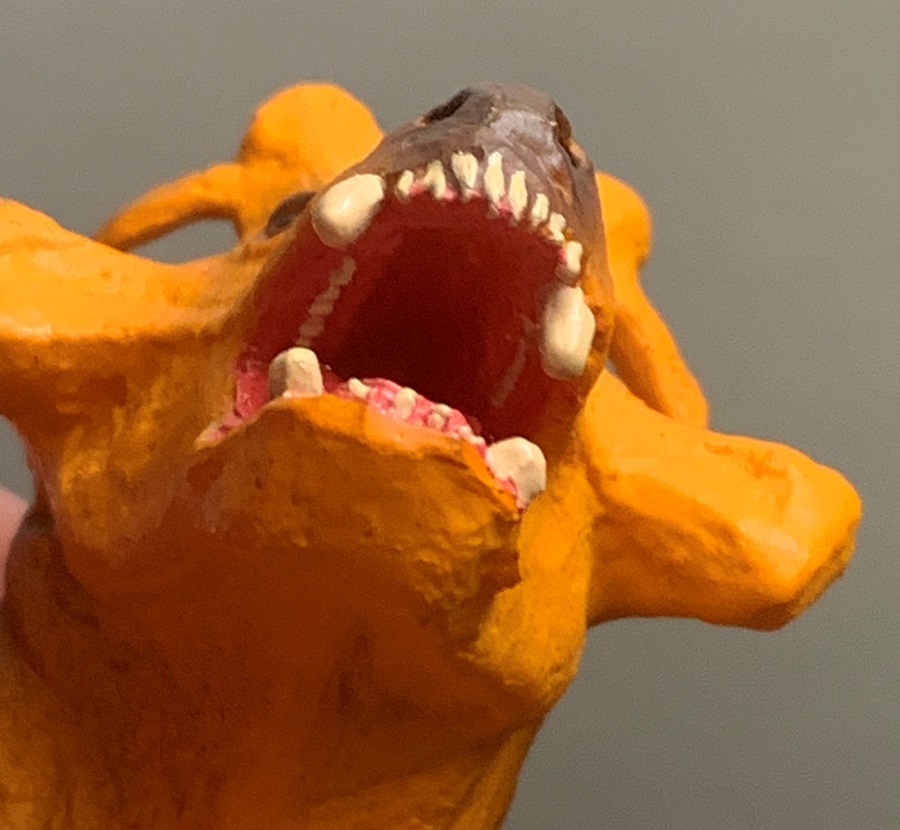
The horns of Estemmenosuchus were almost certainly used for display and/or intra-species combat. Being somewhat palmate they’re often compared to a moose’s antlers. They include antler-like structures on top of the head, one on either side of the head, and a small horn on the snout. Estemmenosuchus had forward-facing eyes, probably due to the placement of its display structures. All of that is faithfully reproduced on this figure.

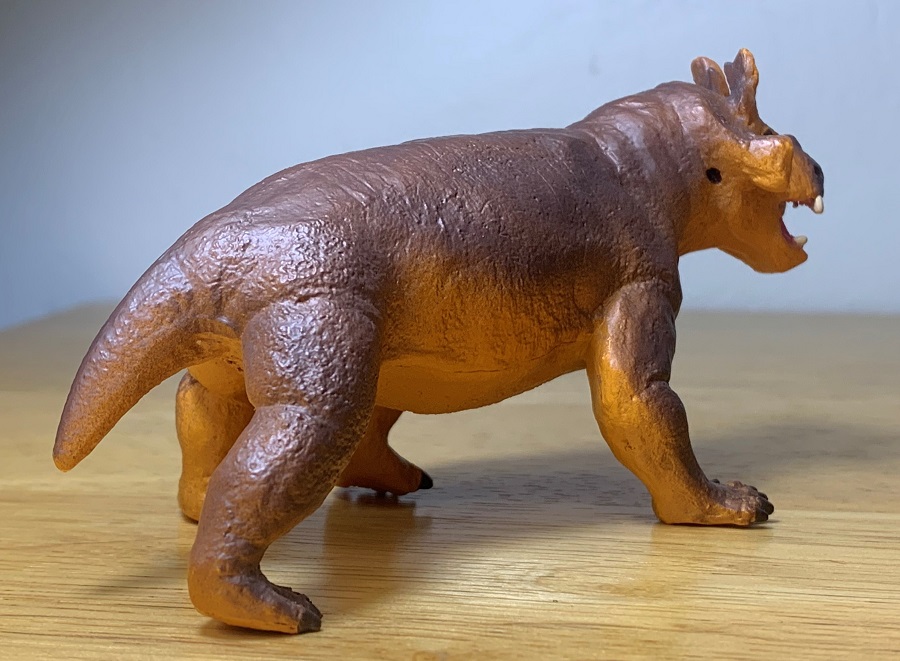
CollectA also recently released an Estemmenosuchus and on their figure they chose to make the horns appear even more antler-like in that they’re depicted as being bare boned. But they were not antlers, nor would they have been shed like antlers, so such a reconstruction seems unrealistic. Safari has covered the horns of their figure in skin. We don’t know what covered these structures in life, but they were almost certainly covered in something, be it skin or keratin, and so I prefer Safari’s choice to cover them. I prefer it aesthetically too.


Speaking of skin, we have skin impressions of Estemmenosuchus. They seem to show that the animal had smooth skin, enhancing the hippo-like appearance of Estemmenosuchus. The Safari figure also has smooth skin although there is some light stippling in various places to add texture. The figure is appropriately squat and stocky, with robust limbs, and thick rolls of skin running down the neck. The tail is short and pointed and all the bodily orifices are sculpted onto the figure, including the ear openings and a cloaca (since monotremes have a cloaca it’s safe to assume that stem-mammals did too). The figure has a decidedly more mammalian feel to it than CollectA’s, thanks to features like the fleshy lips, robust build, and somber colors.
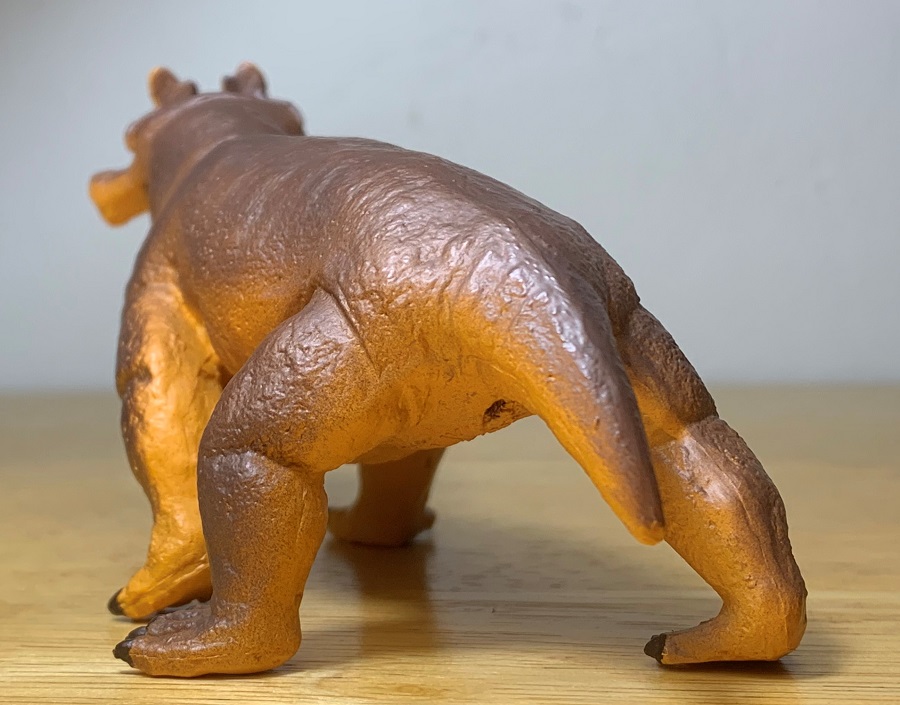
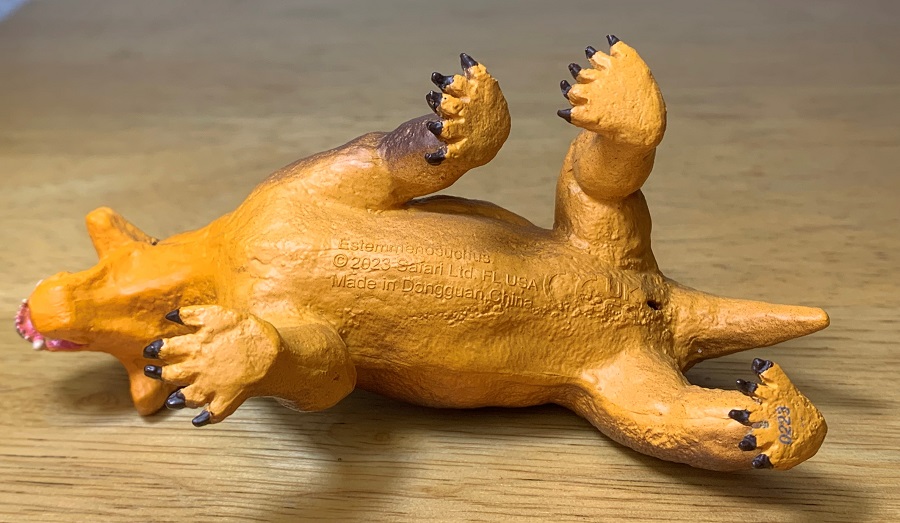
The figure is painted in orange tones, with the back being rust colored and gradually fading to a kind of apricot orange on the underside. It’s a figure that would be easily lost in fall foliage. It’s not a flamboyantly painted figure but that’s alright, it’s simple and effective and works well for a therapsid. The eyes are black, teeth white, and the inside of the mouth is pink. Five digits are sculpted on each foot and they each have nails painted black.
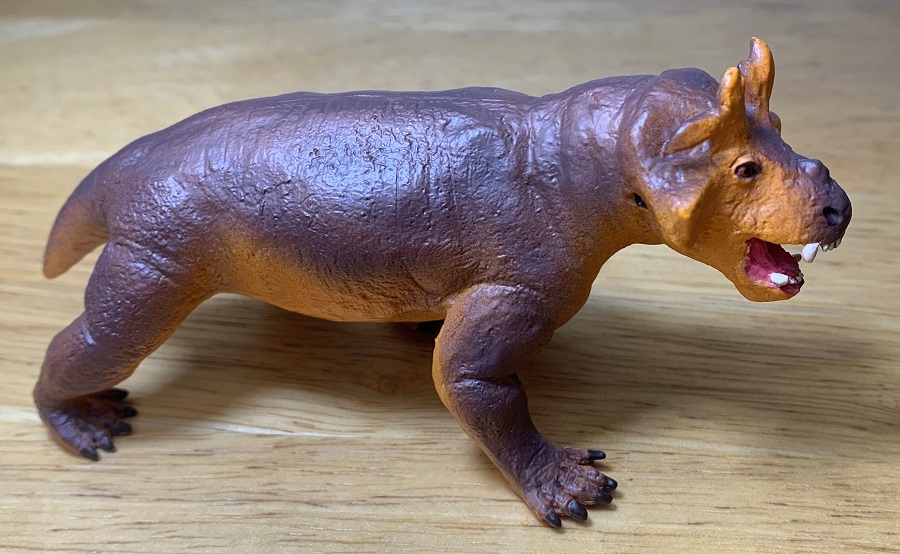

The Safari Estemmenosuchus is an outstanding figure of one of my favorite Permian animals and I’m totally stoked to add it to my collection. Although CollectA recently did the same species it’s great to have options, especially with something as obscure and enigmatic as an Estemmenosuchus.
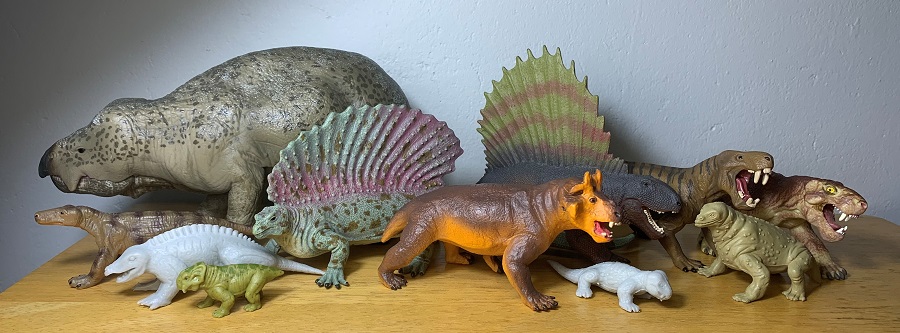
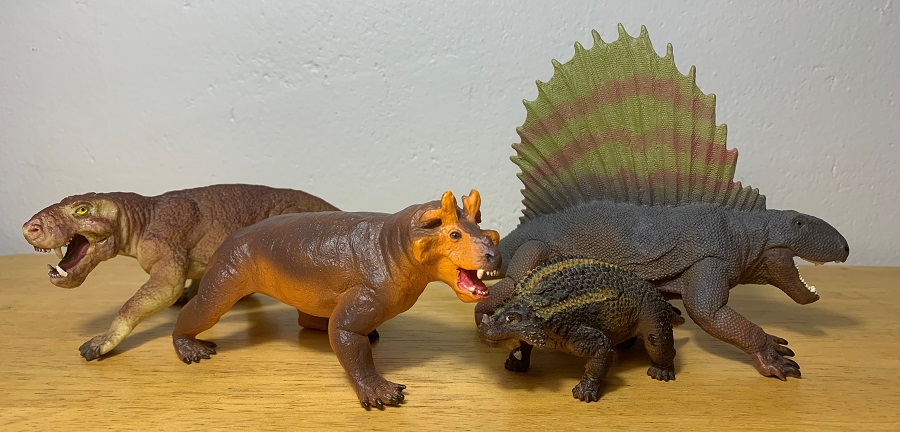
You can literally count on one hand how many figures of this animal have been made. But the thing is, if we want toy companies to make more of these obscure prehistoric animals, we must show our support and buy them. Every time a company like Safari Ltd. makes something like a Permian synapsid instead of another giant theropod, they take a risk. Some truly outstanding figures like the Safari Einiosaurus and Nasutoceratops have already been retired, after only a few short years of production. This is because they don’t sell well. It could very well be that this figure won’t sell well either, but it needs to, otherwise we won’t get more like it. So go out and buy yourself the Safari Estemmenosuchus, and while you’re at it, buy one for your kid, niece, nephew, whoever. The Safari Estemmenosuchus will be available soon on Safari’s website, here. Lastly, I would like to extend my gratitude towards Safari Ltd. for kindly sending along this figure as a review sample.
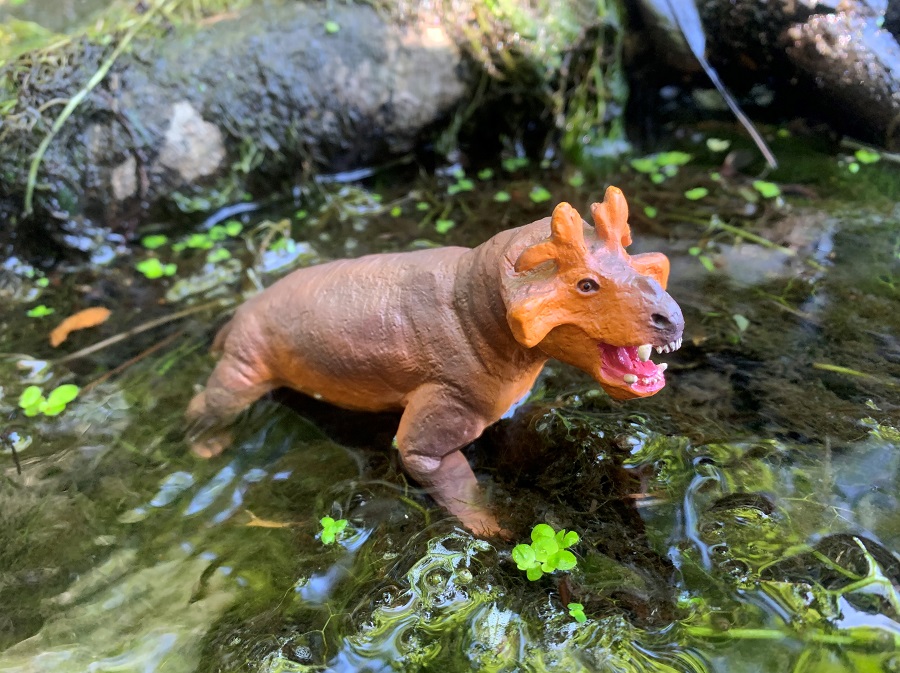

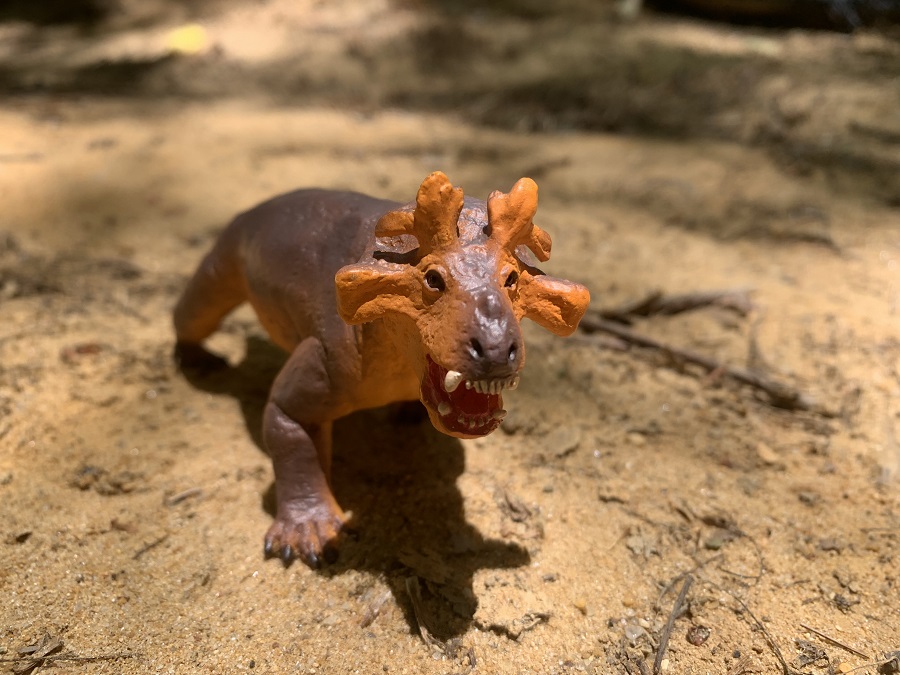
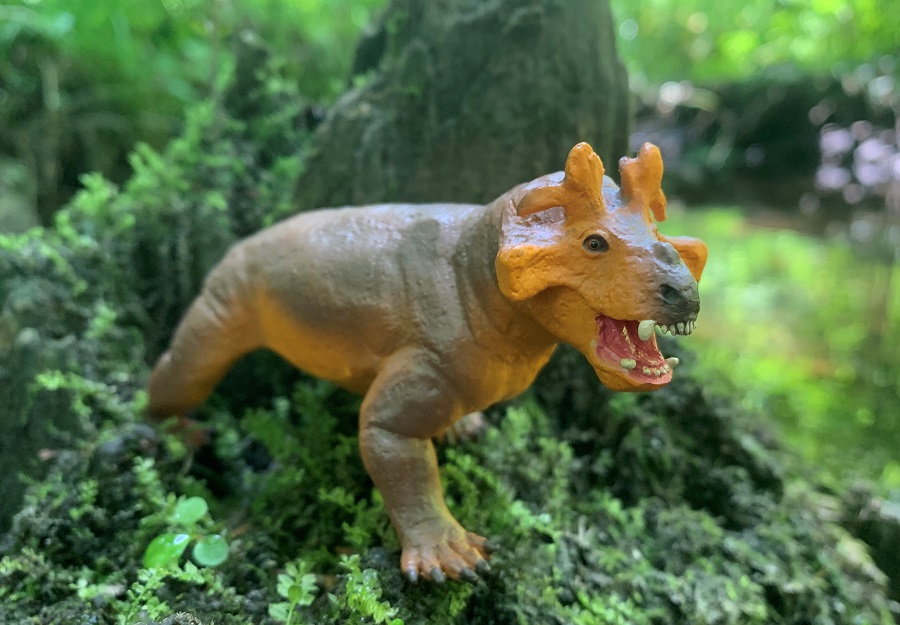
Support the Dinosaur Toy Blog by making dino-purchases through these links to Ebay and Amazon. Disclaimer: links to Ebay.com and Amazon.com on the Dinosaur Toy Blog are often affiliate links, when you make purchases through these links we may make a commission

This is amazing! as an exclusive permian collector this makes me happy and I can’t wait for it still.
I wish they’d do different Permian animals though, so many that got to be represented still. Many upgrades too.
An exclusive Permian collector! Not a ton to choose from, must be well over half Dimetrodon alone.
My scene for Late Permian Russia is really starting to fill in; would make a good match with Scutosaurus and Inostrancevia if set around 260 million BC.
Elated for this release along with my gratitude to Safari for releasing another Permian animal. I know of only two other Estemmenosuchus figures being the Kenner 97’ Jurassic Park and the CollectA 2018 one. An excellent quartet with Safari’s exceptional Dimetrodon, Inostrancevia, and the ever elusive Scutosaurus. Would enthusiastically welcome an updated Scutosaurus, as well as an Anteosaurus, Moschops, Eryops, or Edaphosaurus.
Yes, I realize children are the main market and will spend their pocket money on a more conventional prehistoric figure. But, Safari like Schliech could offer limited runs of certain types by offering them exclusively on their site. Holding a preorder limit can also insure all units could be prepaid for so as not to lose time and money. On eBay, a Scutosaurus sold for £160.00 so I suspect many would prepay say £19.99 for a rerelease with an updated paint scheme. This marketing strategy works both for small manufacturers and giant corporations. Every year Safari could take polls based on consumer submissions then hold a vote as to which figures are chosen. Once funded, the figures can be made available and we, the collectors and enthusiasts can receive the products we’re looking for.
Yes, if Safari would and could adopt a funding model like the one that you described, then it would appear to be a win-win for both parties, manufacturer and consumer alike. It should also allow Safari to zero in on the smaller collector segment and tailor specific figures for it – such as this figure. Accordingly, elements such as the teeth on the Estemmenosuchus would not have to be excessively rounded off for child safety. This, BTW, is my only gripe about this figure. If I buy it, I’ll certainly sharpen and repaint the dentary.
I love it. I want it. Safari is hitting home runs all year this year!
I like this better than Collecta’s. I’ll be picking it up with the Majungasaurus when they are released.
Did these animals have colour vision, is it known?
Very likely, yes. These were large, diurnal animals. The loss of color vision is thought to be associated with widespread nocturnality among mammals during the Mesozoic.
Wonderful addition!!!!!
As I said in the forum though, I sadly won’t be getting it. I did get the CollectA version, and it’s too good to replace so soon.
But I thank Safari for this amazing contribution to our hobby. I hope it does well to encourage similar taxa to be made!
Oh, also, at 1:24 it scales well with their (sadly retired) Inostrancevia and Scutosaurus, which is a nice surprise.
Good to hear it scales well with them, since I want to have this displayed next to them (well once I can have shelves to display things on again).
Love the shot with all the Permian critters Gwangi.
Thank you, great review, I really enjoyed reading it! And a lovely figure as well, it looks very alive, has good heft to it. Very impressed, and not in the least that Safari decided to tackle a Permian therapsid.
Most the pity CollectA’s version was absent considering it was named.
1/24 … that’s good to know. It would work perfectly with the other two figures, both of which I’d picked up earlier in my collecting journey. One advantage it possesses over against the CollectA Estemmenosuchus is a much closer visual congruity of paint application with them.
Excellent. We’re on the same page, I’m already planning to give this to all my friends’ kids for their birthdays. I don’t have kids of my own, so I can afford to buy a whole bunch of these!